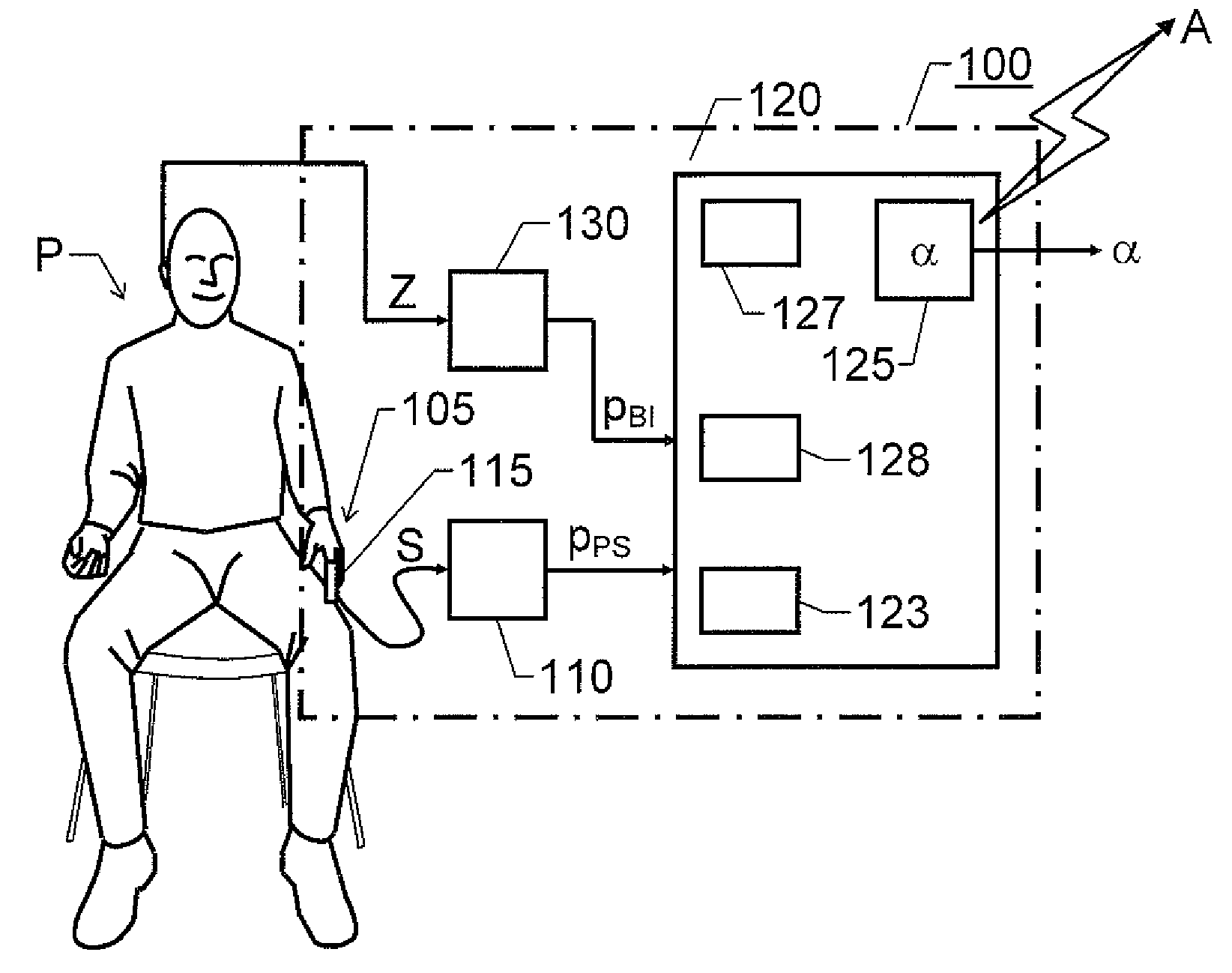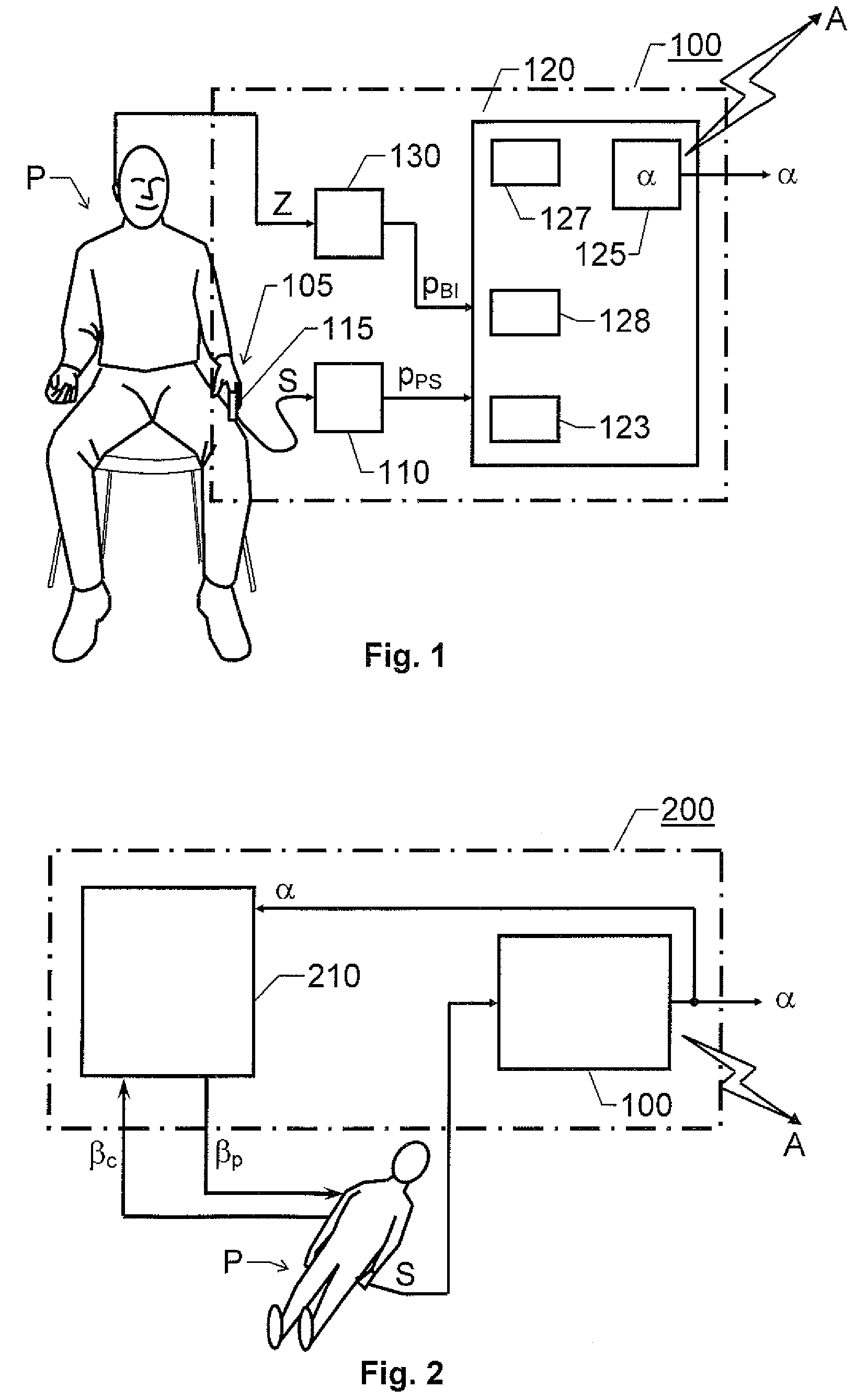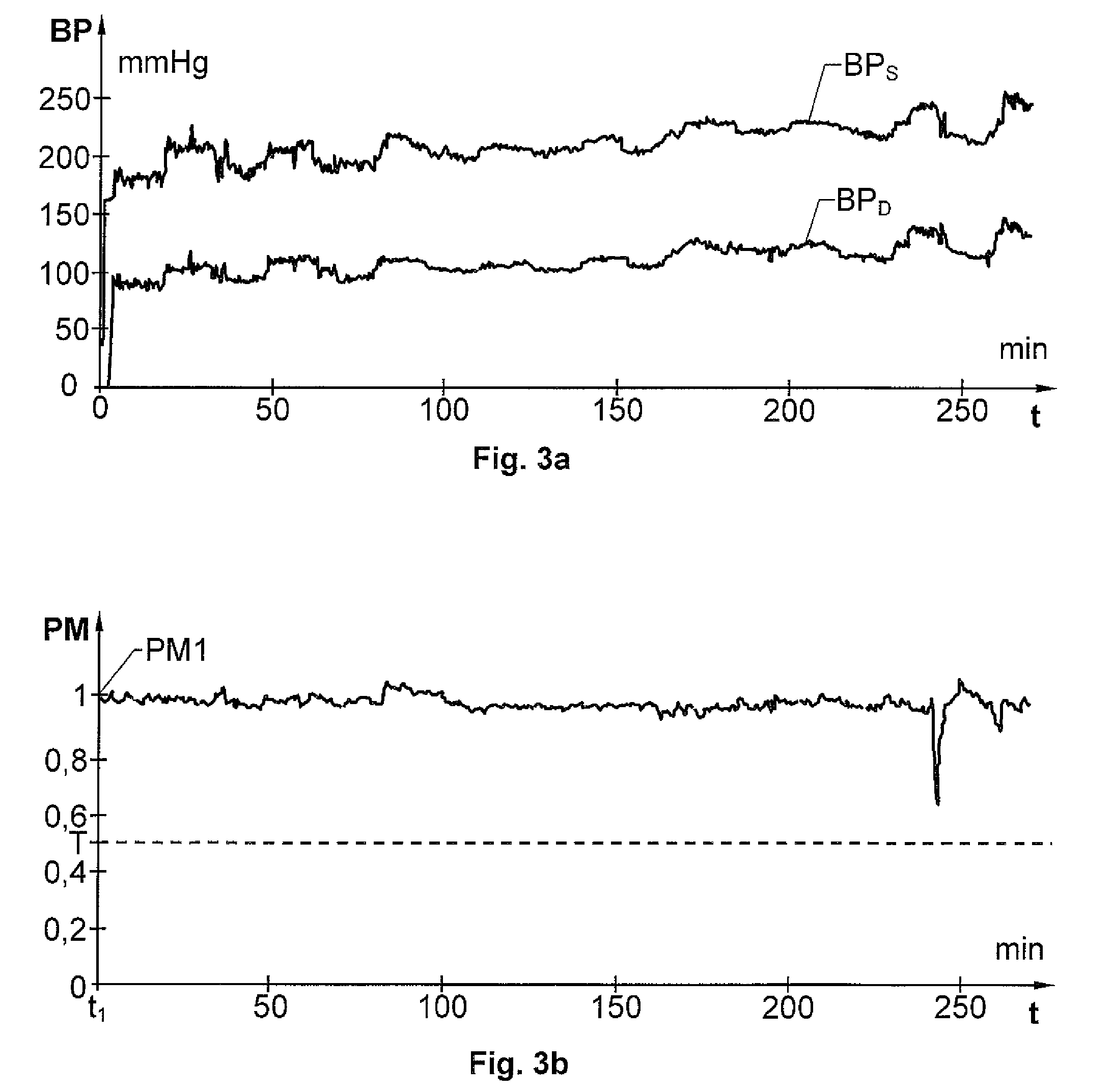Prediction of rapid symptomatic blood pressure decrease
a technology of symptomatic blood pressure and prediction, applied in the field of alarm devices and medical systems, can solve the problems of unsatisfactory body provision, major problem of renal patients' disposal of surplus water, and not only strenuous for patients
- Summary
- Abstract
- Description
- Claims
- Application Information
AI Technical Summary
Benefits of technology
Problems solved by technology
Method used
Image
Examples
Embodiment Construction
[0033]We refer initially to FIG. 1, which depicts an alarm arrangement 100 for predicting rapid symptomatic blood pressure decrease in a subject P according to one embodiment of the invention. The arrangement 100 includes a pulse recording means 110 and 115 respectively, and a control unit 120.
[0034]The pulse recording means has a pulse oximetry instrument 110, and preferably a separate sensor unit 115. This unit 115 includes at least one light source and at least one light detector through which a pulse signal S is registered that describes light response variations in at least one blood vessel in a peripheral body part 105 of the subject P (e.g. in a finger, a toe, an earlobe, a nose tip or other extremity, in the skin thereof, or in the skin of any other body part) depending on where the sensor unit 115 is attached to the subject P. The light response variations preferably reflect variations in the absorption of the light transmitted from said at least one light source. However, ...
PUM
| Property | Measurement | Unit |
|---|---|---|
| threshold | aaaaa | aaaaa |
| threshold | aaaaa | aaaaa |
| pulse shape parameter | aaaaa | aaaaa |
Abstract
Description
Claims
Application Information
 Login to View More
Login to View More - R&D
- Intellectual Property
- Life Sciences
- Materials
- Tech Scout
- Unparalleled Data Quality
- Higher Quality Content
- 60% Fewer Hallucinations
Browse by: Latest US Patents, China's latest patents, Technical Efficacy Thesaurus, Application Domain, Technology Topic, Popular Technical Reports.
© 2025 PatSnap. All rights reserved.Legal|Privacy policy|Modern Slavery Act Transparency Statement|Sitemap|About US| Contact US: help@patsnap.com



